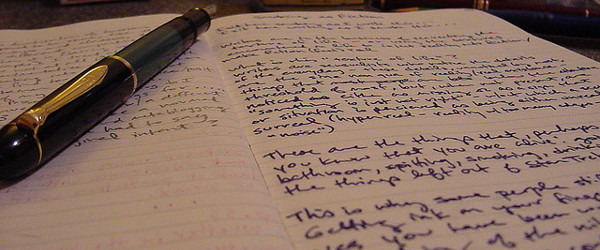How To Write an Awesome Abstract

Let’s face it: when you said you read that paper, what you really meant was that you read the abstract. And that conference you went to? You probably scanned the abstracts of the posters instead of actually attending the poster session and chatting with the presenters. It’s a dirty little secret and a time-saving tool for scientists all over the world to read abstracts only when crunched for time. If the paper seems interesting enough, then we’ll commit to actually reading the whole thing. So how do you make sure that people get the significance of your study from a single paragraph, and how do you convince people that it’s worth their time to keep on reading? In today’s article, we’ll talk about how to write an excellent abstract that will convey everything they need to know, and convince them that they want to know more.
Essential components
Because the abstract is a short (short!) summary of your paper or poster, you have a limited amount of space to get your point across. Here are the essential components that should be included, and about how much space you should allow yourself for each part:
- Background (2-3 sentences): Provide just enough background to “set the scene” – the bare minimum necessary to make what follows understandable. Each sentence should narrow the focus, so go from “Cancer is a worldwide problem…” to “Liver cancer in particular causes x% mortality…” to “Protein x plays an important role in liver cancer…”.
- Question (1 sentence): What was the goal of your study? State your hypothesis or question clearly and succinctly.
- Results (4-5 sentences): This is the “meat” of the abstract, so devote most of your allotted space to this portion. I generally aim to sum up each figure or section of the paper in one sentence of the abstract. You’ll have to include some experimental detail for the results to make sense, so these sentences will often take the form of: “When the expression of protein x was knocked down by RNAi, the cells did x, suggesting that…”. Try to avoid specific values, though (percentages, concentrations, standard error, etc.), as these will bog down the reader.
- Conclusions (1-2 sentences): Sum up very quickly why your results are important by tying them back in to the issue you mentioned in the introductory sentence. You don’t want to provide any new information here, just tie it all together. It’s handy to use a stock phrase like “In conclusion…”, or “Taken together, these results show…” to finish things up neatly.
Things to keep in mind
Aside from the above pointers on what to include in your abstract, there are a few additional points that it’s worth considering:
- Word limit: Make sure that you check the journal’s guidelines for the word limit of the abstract before you get too carried away. I usually write up a draft including everything I think needs to be in the abstract, then check the word limit and add or delete material as appropriate. Don’t spend too much time tweaking the details without knowing how much space you have to work with!
- Formatting: Many journals also have specific guidelines for formatting your abstract, i.e. whether or not to include section titles. Take a quick look and see if there are any other formatting issues you need to take into consideration.
- Referencing: One quirk of scientific writing is that it’s very rare to use citations in an abstract. This is why it’s a good idea to keep your background quite vague in the abstract, so you won’t have to cite previous papers. It’s also common practice to leave something uncited in the abstract, but cite it immediately in the introduction to the paper, to make sure credit is given where credit is due.
I encourage you to spend some dedicated time writing your abstract – don’t just dash it off at the end, right before the submission deadline for that poster session! People will decide whether or not to devote their time and attention to the work you’re presenting based on the contents of that abstract. Make it easy to understand what you did, and easy for people to agree with you that your results are important and worth their attention.
What are your tips for writing killer abstracts?